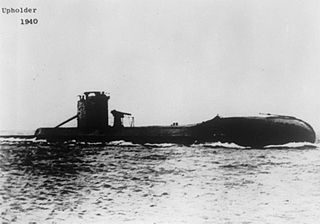
HMS Upholder (P37) was a Royal Navy U-class submarine built by Vickers-Armstrong at Barrow-in-Furness. She was laid down on 30 October 1939, launched on 8 July 1940 by Mrs. Doris Thompson, wife of a director of the builders. The submarine was commissioned on 31 October 1940. She was one of four U-class submarines which had two external torpedo tubes at the bows in addition to the 4 internal ones fitted to all boats. They were excluded from the others because they interfered with depth-keeping at periscope depth.

German submarine U-509 was a Type IXC U-boat of Nazi Germany's Kriegsmarine during World War II. The submarine was laid down on 1 November 1940 at the Deutsche Werft yard in Hamburg as yard number 305. She was launched on 19 August 1941, and commissioned on 4 November 1941 under the command of Korvettenkapitän Karl-Heinz Wolff.

German submarine U-502 was a Type IXC U-boat of Nazi Germany's Kriegsmarine during World War II. The submarine was laid down on 2 April 1940 at the Deutsche Werft yard in Hamburg with yard number 292, launched on 18 February 1941 and commissioned on 31 May under the command of Kapitänleutnant Jürgen von Rosenstiel.

German submarine U-66 was a Type IXC U-boat of Nazi Germany's Kriegsmarine during World War II. The submarine was laid down on 20 March 1940 at the AG Weser yard at Bremen, launched on 10 October and commissioned on 2 January 1941 under the command of Kapitänleutnant Richard Zapp as part of the 2nd U-boat Flotilla.
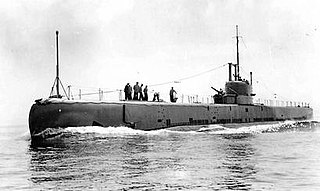
HMS Narwhal (N45) was one of the six ship class of Grampus-class mine-laying submarine of the Royal Navy. She was built by Vickers Armstrong, Barrow and launched 29 August 1935. She served in the Second World War in home waters. She was lost in the North Sea on 23 July 1940, probably sunk by German aircraft.

HMS Rorqual (N74) was a British mine-laying submarine, one of the six ships of the Grampus class of the Royal Navy. She was built by Vickers Armstrong, Barrow and launched 27 July 1936. She served in the Second World War in the Mediterranean and in the far east. She was the only Grampus-class submarine to survive the war, and she is considered the most successful minelaying submarine of World War II, sinking 57,704 GRT of enemy shipping, 35,951 of which through her mines.

HMS Truant (N68) was a T-class submarine of the Royal Navy. She was laid down by Vickers Armstrong, Barrow and launched on 5 May 1939.

HMS Torbay (N79) was a T-class submarine of the Royal Navy. She was laid down at Chatham Dockyard and launched on 9 April 1940.
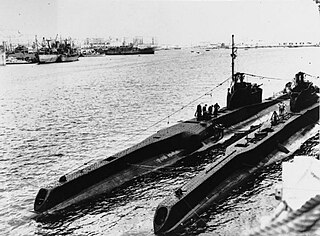
HMS Turbulent (N98) was a T-class submarine of the Royal Navy. It was laid down by Vickers Armstrong, Barrow and launched in May 1941.

HMS Ursula was a U-class submarine, of the first group of that class constructed for the Royal Navy. The submarine entered service in 1938 and saw action during the Second World War in the North and Mediterranean Seas. In 1944, Ursula was transferred to the Soviet Navy and renamed V-4. She remained in Soviet service until 1950 when the submarine was returned to the United Kingdom and was sold for scrap in May 1950.

HMS Utmost was a British U class submarine, of the second group of that class, built by Vickers Armstrong, Barrow-in-Furness. She was laid down on 2 November 1939 and was commissioned on 17 August 1940. So far she has been the only ship of the Royal Navy to bear the name Utmost.

German submarine U-510 was a Type IXC U-boat of Nazi Germany's Kriegsmarine during World War II, which later served in the French Navy. The submarine was laid down on 1 November 1940 at the Deutsche Werft yard at Hamburg as yard number 306, launched on 4 September 1941, and commissioned on 25 November 1941 under the command of Korvettenkapitän Karl Neitzel.
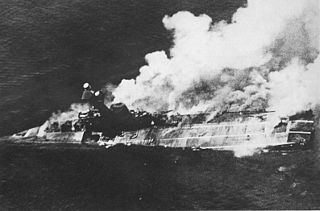
Prior to World War II, the Indian Ocean was an important maritime trade route between European nations and their colonial territories in East Africa, the Arabian Peninsula, British India, Indochina, the East Indies (Indonesia), and Australia for a long time. Naval presence was dominated by the Royal Navy Eastern Fleet and the Royal Australian Navy as World War II began, with a major portion of the Royal Netherlands Navy operating in the Dutch East Indies and the Red Sea Flotilla of the Italian Regia Marina operating from Massawa.
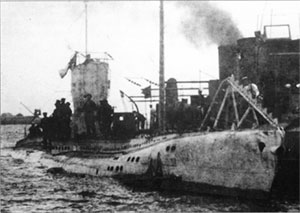
SM UB-43 was a Type UB II submarine or U-boat for the German Imperial Navy during World War I. UB-43 was sold to the Austro-Hungarian Navy during the war. In Austro-Hungarian service the B was dropped from her name and she was known as SM U-43 or U-XLIII as the lead boat of the Austro-Hungarian U-43 class.
German submarine U-177 was a Type IXD2 U-boat of Nazi Germany's Kriegsmarine during World War II. The submarine was laid down on 25 November 1940, at the DeSchiMAG AG Weser yard in Bremen, as yard number 1017. She was launched on 1 October 1941, and commissioned on 14 March 1942, under the command of Kapitänleutnant Wilhelm Schulze. After a period of training with the 4th U-boat Flotilla at Stettin, the boat was transferred to the 10th flotilla on 1 October 1942, and based at Lorient, for front-line service, she was then reassigned to the 12th flotilla at Bordeaux on 1 December.
German submarine U-652 was a Type VIIC U-boat of Nazi Germany's Kriegsmarine during World War II. The submarine was laid down on 5 February 1940 at the Howaldtswerke yard at Hamburg, launched on 7 February 1941, and commissioned on 3 April 1941 under the command of Oberleutnant zur See Georg-Werner Fraatz.

SM U-24 was one of 329 submarines serving in the Imperial German Navy in World War I. She was engaged in commerce warfare during the First Battle of the Atlantic.

The action of 13 November 1943 was a submarine engagement of World War II. It resulted in the sinking of the Japanese Navy's Kaidai Junsen Type B1 submarine I-34 in the Strait of Malacca by the British Royal Navy submarine HMS Taurus. I-34 was on a Yanagi Mission, an underwater convoy secretly shipping goods between Japan and their German allies.
MV Nino Bixio was an Italian cargo ship. Giovanni Ansaldo and Company of Genoa built her in 1941 for the Garibaldi group, a Genoese shipping company. A Royal Navy submarine torpedoed and damaged her in 1942, killing 336 Allied prisoners of war who were aboard her. The ship survived, was repaired, and continued in merchant service until 1970. She was scrapped at La Spezia in 1971.
















